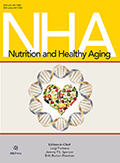Authors: Hatle, J.D. | Karjasevic, A. | Rehfeldt, E. | Nagle, F.S. | Milano, L.J. | Patel, S. | Hiatt, D. | McCue, M.D.
Article Type:
Research Article
Abstract:
BACKGROUND: Life-extending dietary restriction increases energy demands. Branched-chain amino acids (BCAAs), at high levels, may be detrimental to healthspan by activating the mechanistic Target of Rapamycin (mTOR). Whether organismal oxidation of BCAAs increases upon dietary restriction is unknown. OBJECTIVE: Test whether dietary restriction (DR, which creates an energy deficit) or supplemental dietary BCAAs (superfluous BCAAs) increases oxidation of BCAAs, potentially reducing their levels to improve healthspan. METHODS: Grasshoppers were reared to middle-age on one of four diets, each a level of lettuce feeding and a force-fed solution: 1) ad libitum lettuce & buffer, 2) ad libitum
…lettuce & supplemental BCAAs, 3) DR lettuce & buffer, and 4) DR lettuce & supplemental BCAAs. On trial days, grasshoppers were force-fed one 13 C-1-BCAA (isoleucine, leucine, or valine). Breath was collected and tested for 13 CO2 , which represents organismal oxidation of the amino acid. Additional trials re-tested oxidation of leucine (the most potent activator of mTOR) in both females and males on dietary restriction. RESULTS: Dietary restriction generally increased cumulative oxidation of each BCAA in females and hungry males over ∼8 hr. Results were consistent for isoleucine and valine, but less so for leucine. Supplementation of BCAAs, in combination with dietary restriction, increased isoleucine in hemolymph, with similar trends for leucine and valine. Despite this, supplementation of BCAAs did not alter oxidation of any BCAAs. CONCLUSIONS: Dietary restriction can increase oxidation of BCAAs, likely due to an energy deficit. The increased oxidation may decrease available BCAAs for activation of mTOR and improve healthspan.
Show more
Keywords: Aging, metabolism, hunger, isoleucine, leucine, valine
DOI: 10.3233/NHA-190073
Citation: Nutrition and Healthy Aging,
vol. 5, no. 3, pp. 209-223, 2019




